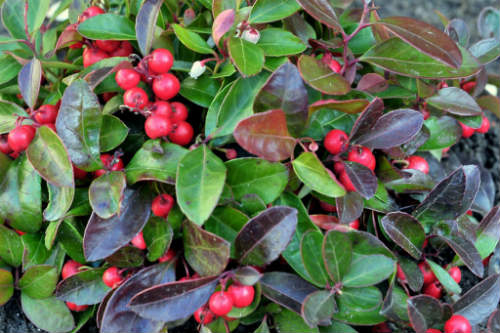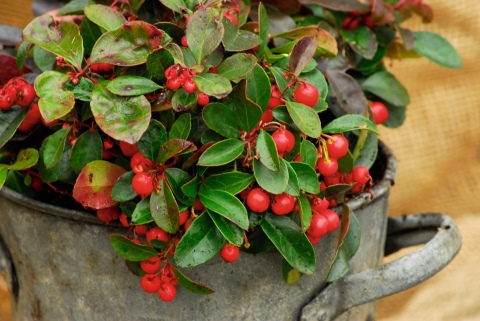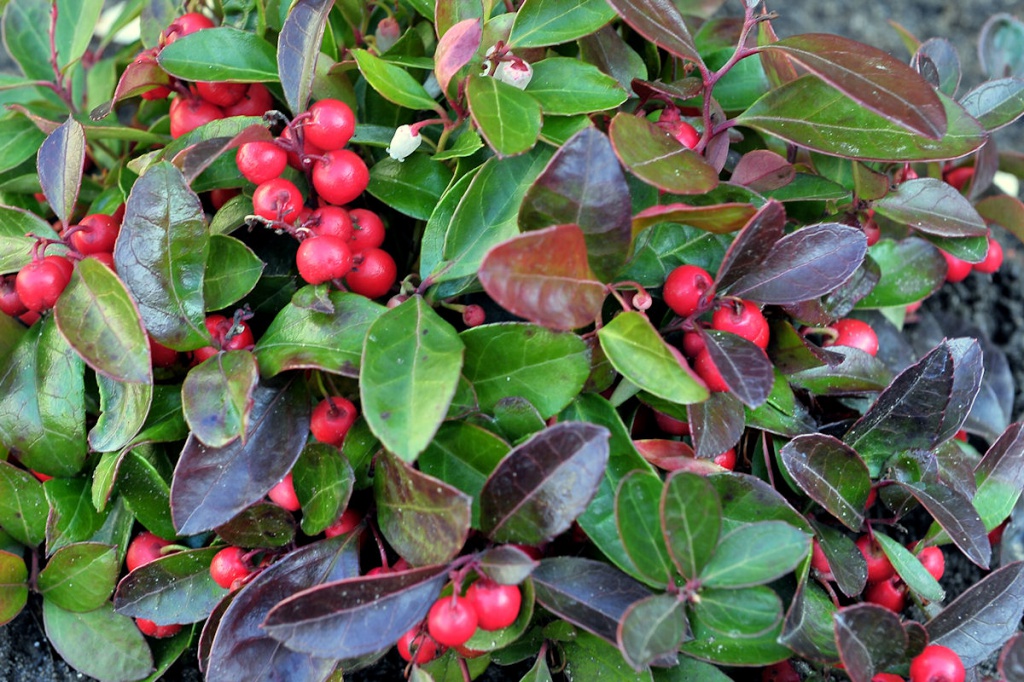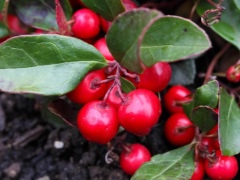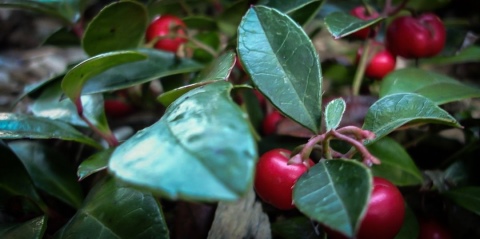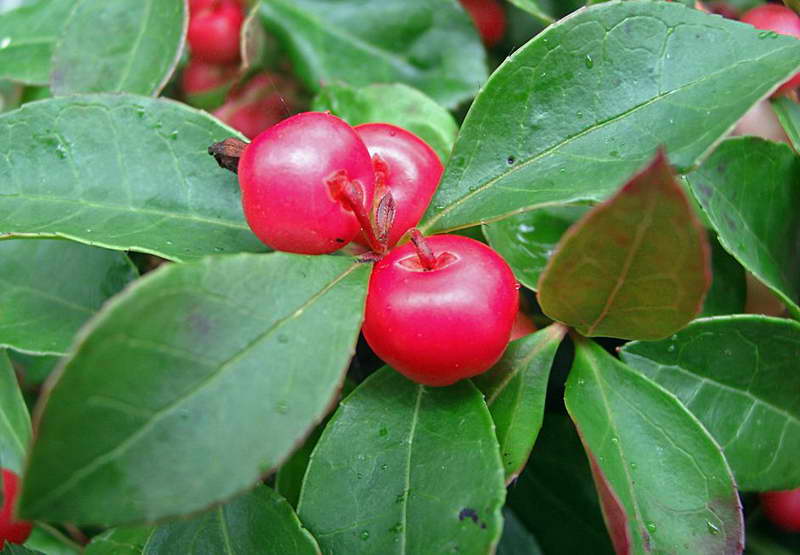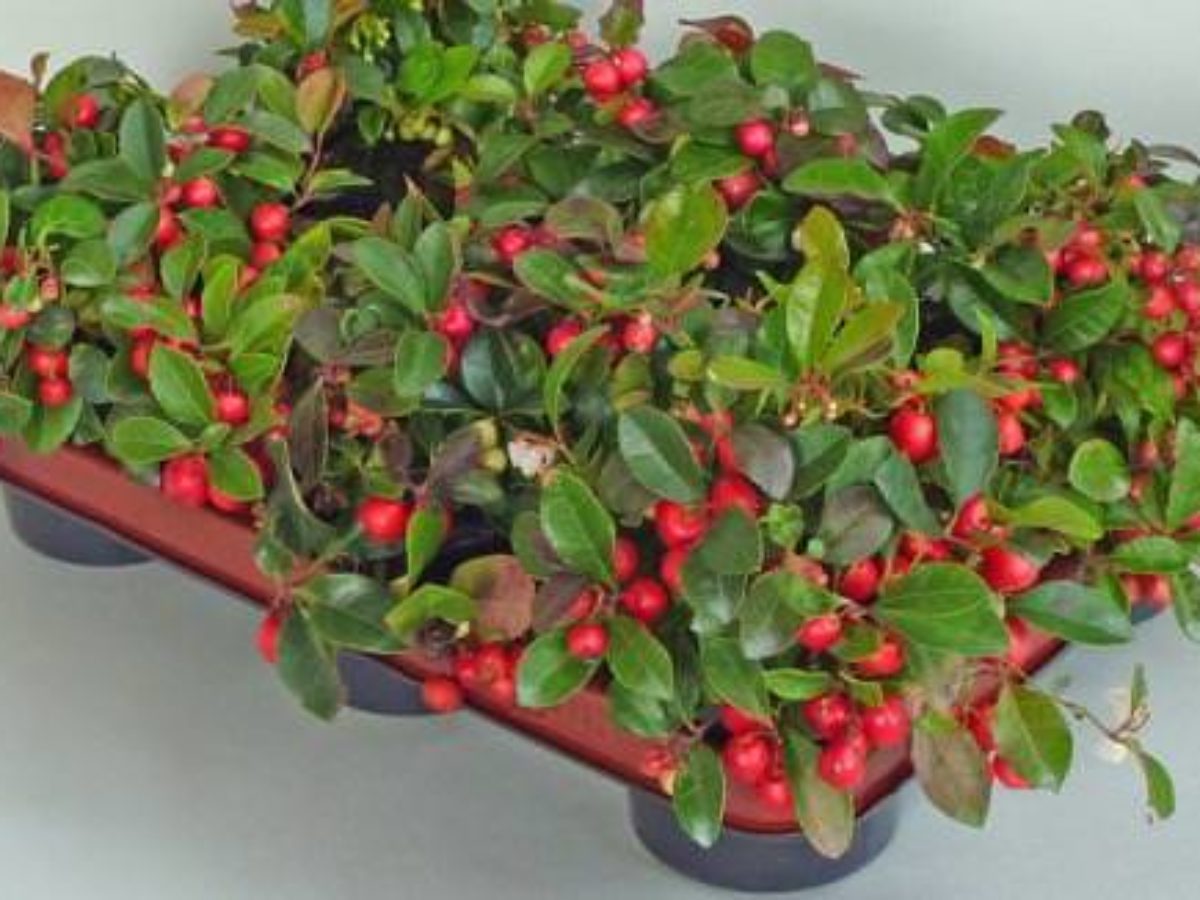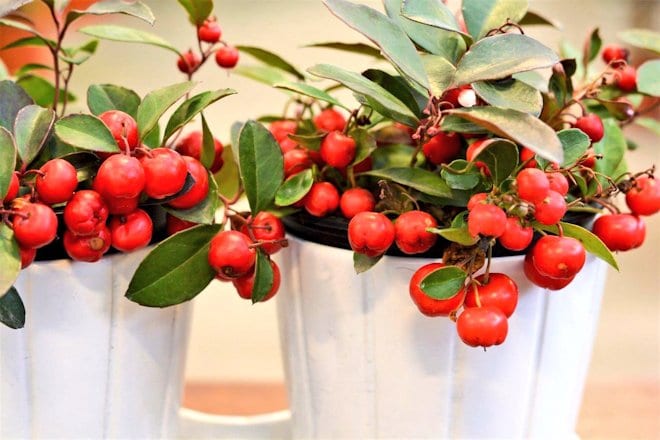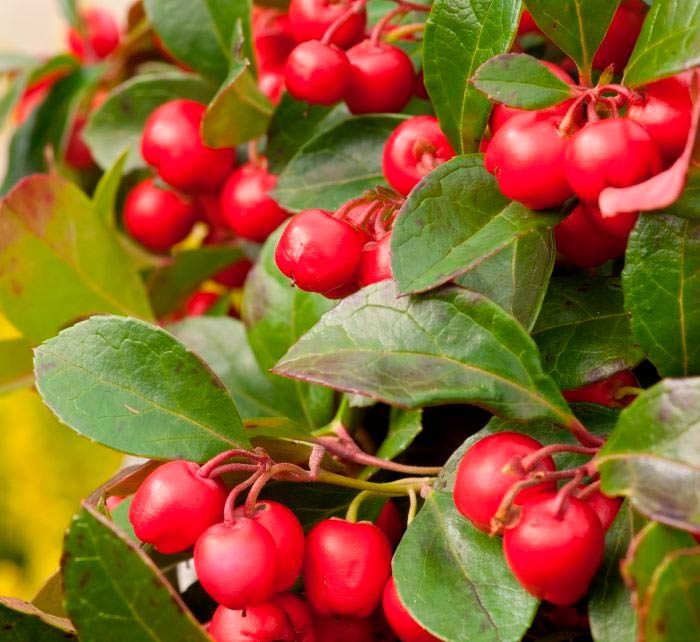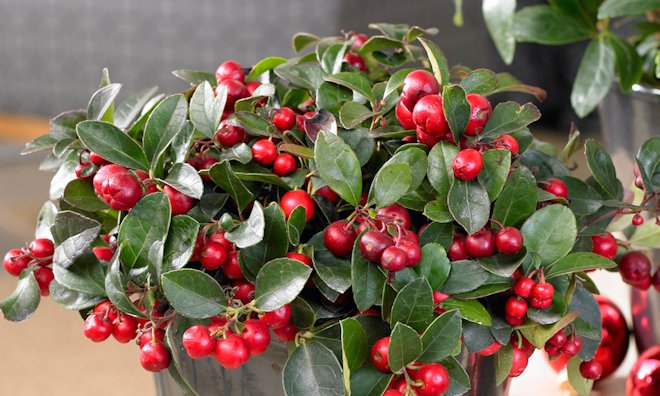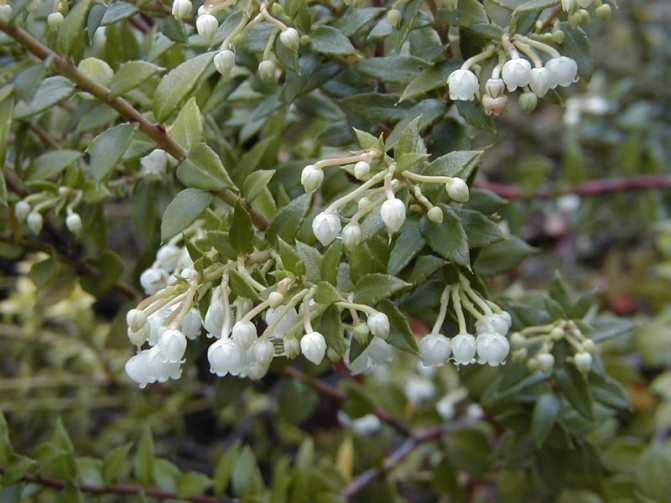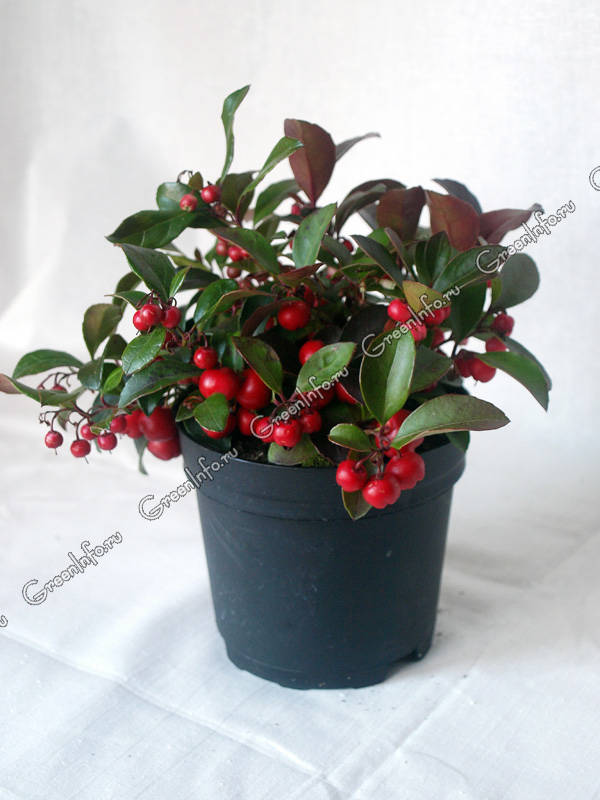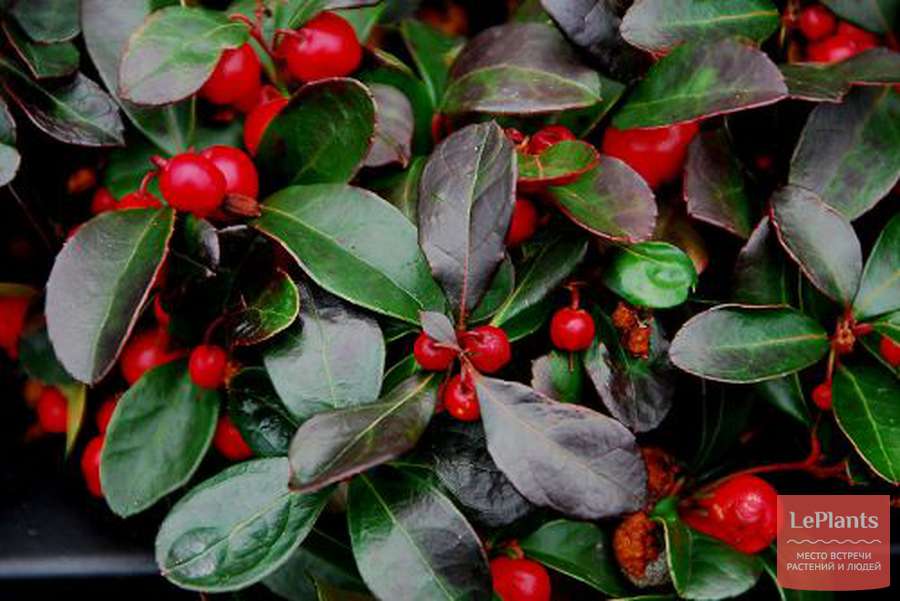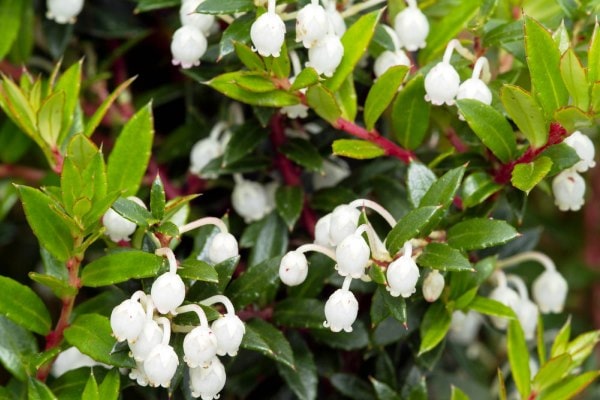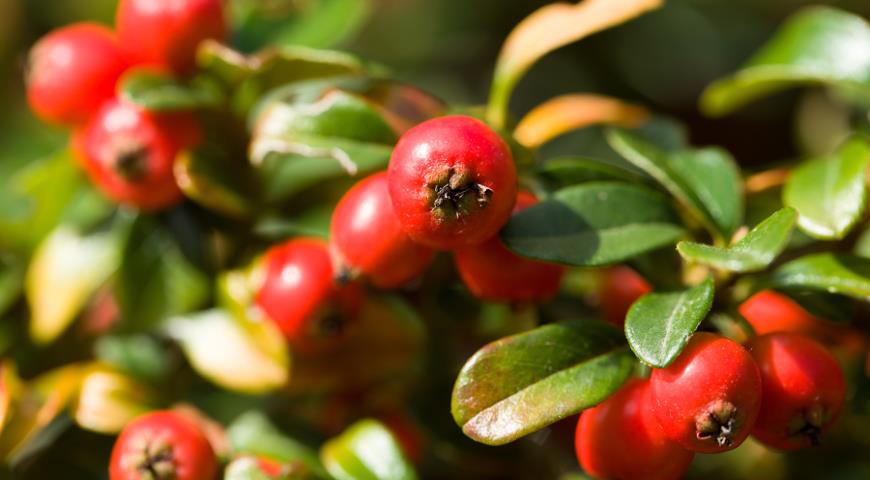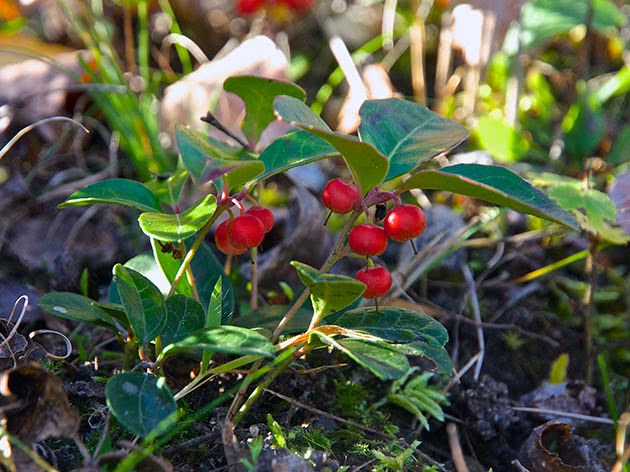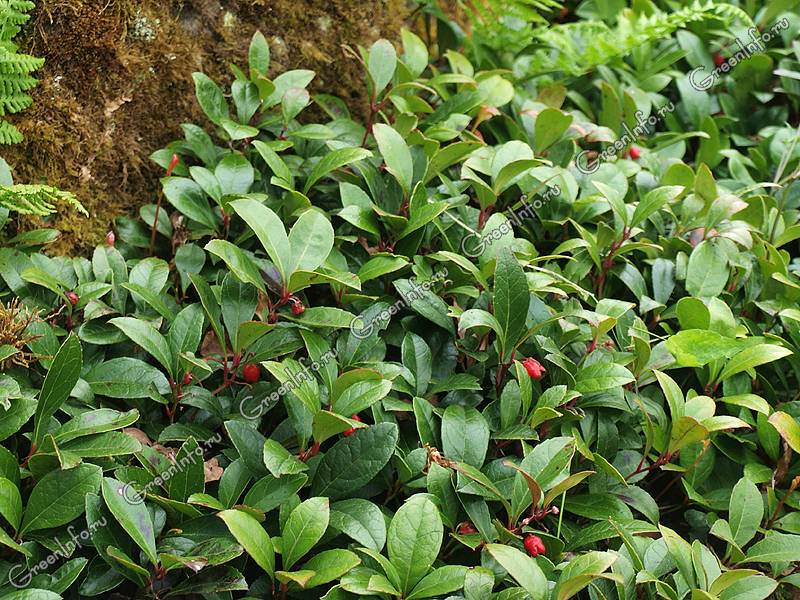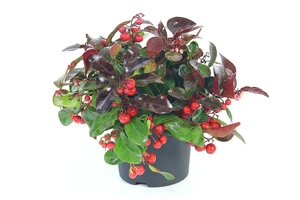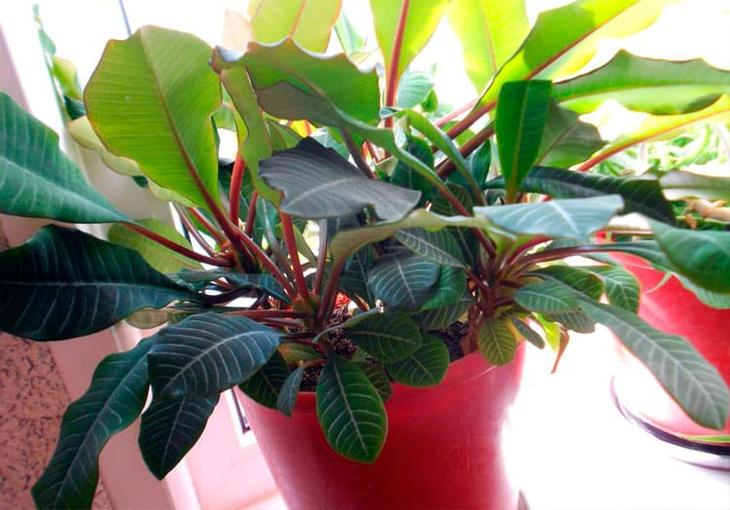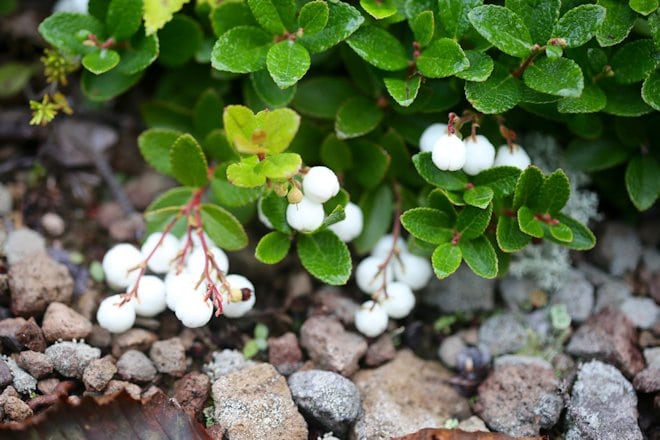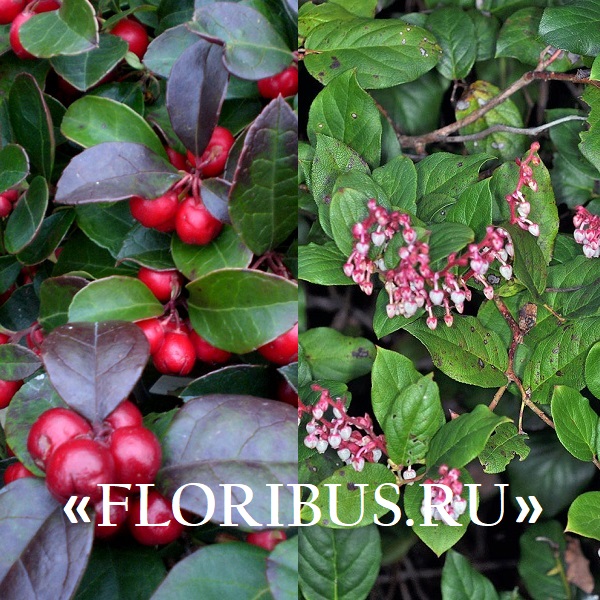Maintenance and care of the haultery at home
All knowledgeable gardeners long ago fell in love with the ornamental shrub - recumbent haulteria. Should they not know how a plant decorates a garden, how it can turn the most ordinary-looking lawn into a luxurious carpet. Since it grows very slowly (only 1 centimeter per season), it is an unrivaled specimen for decorating borders.
You can use seeds to grow your haulteria at home on a windowsill or balcony.
Growing from seeds.
- First of all, you need to prepare the seeds. They are kept in the refrigerator for 3 months in a bag with a damp cloth or sand (stratification). This will significantly increase their germination.
- The soil should be acidic, since the gault haulteria does not tolerate lime even in small quantities.
- The seeds are not buried, they are sprayed with water and covered with polyethylene.
- The seed box is left at temperatures up to plus 20 degrees. In about two weeks, seedlings will appear.
- A pick is made after the appearance of the 4th leaf.
Caring for a ready-made flower purchased at a flower shop is not difficult. You just need to remember a few rules:
- the room temperature should not exceed 15 degrees;
- the plant loves moisture, but not stagnant water in the pan (abundant watering once every two weeks);
- the soil should consist of peat (top layer), needles and sand;
- prune dried branches;
- the flower pot should not stand in direct sunlight, in order to avoid burns on the leaves.
How to grow a haulteria outdoors
The depth of the hole for the plant is no more than 30-35 cm. It is imperative to place drainage at the bottom - it can be medium-sized gravel, broken brick, expanded clay. Then - a mixture of peat with sand and needles. Spill a hole with acidified water. Plant a plant and mulch with peat and sawdust.
Fertilizer is applied in spring, no later than May - either universal or acidic.
Watering the plant loves regular - do not bring the soil to dryness, but also do not flood it (remember the importance of drainage when planting). Any place for planting is chosen - the haulteria grows equally well in the sun and in the shade
Any place for planting is chosen - the haulteria grows equally well in the sun and in the shade.
From time to time it is useful to loosen the soil, remove weeds
This should be done with caution due to the close location of the roots.
Cutting and further planting do not give good results. Unfortunately, a very low percentage of planting material takes root. It is better to propagate the plant by layers from the roots.

The haulteria winters well, especially in the snowy months. In the absence of snow, the plant must be covered with spruce branches.
One of the most popular species in summer cottages is the shallon gault. She is loved for her charming bloom. Delicate heads, like those of a bell or a lily of the valley, are bordered with red cups - a touching sight. And all this against the background of shiny green leaves. The shrub of all species is the tallest (50-70 cm), beautifully coexists with other plants, looks very advantageous in the shade.
Also, this species has won love for its edible berries with a blueberry flavor.
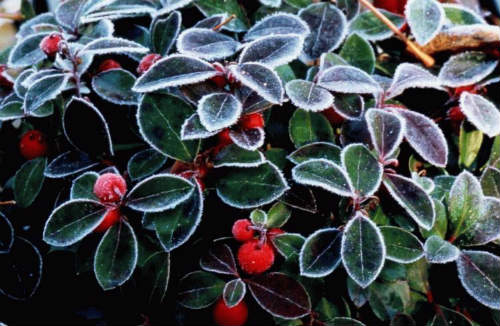
The most popular in our gardens have become two types of shrubs - challon gault and recumbent gault. They perform completely different functions.
The first one decorates any corner allotted to it, and even in the fall will present it with an unusual berry taste.
The second is a ground cover, frost-resistant, evergreen border or component of an alpine slide.
Both species will bring a pleasant variety to your favorite garden and add exoticism. All year round, the haulteria is smartly dressed.In summer, it fascinates with flowering, in winter it teases with bright berries.
Derain white in landscape design

Derain white is often used to create a hedge, as it is very plastic and tolerates a haircut well. Singly and in groups, flowering and variegated forms and varieties look very attractive.
This plant is also often used to strengthen the banks of an artificial reservoir, since it does not suffer from stagnation of liquid in the soil, and looks good next to hosts and other coastal perennials. This shrub is also often planted in areas with a multi-level complex relief. Also, such a plant is often planted in the shade of large trees.
And also white dogwood looks favorably against the background of evergreens, as it has spectacular foliage and stems. This culture retains its attractiveness throughout the growing season, which is its main advantage.
Reproduction by layering
The method works if the bush produces side shoots. They are cut closer to the base, laid in a prepared trench 1-2 cm deep with a cut down, fixed to the ground and sprinkled with fertile soil. The next year, if the layer has all the signs of growth, it is separated and transplanted to a new place.
Legume plant in landscape design
The tree looks great as a tapeworm against the background of a lawn or in a composition of low conifers and decorative deciduous and flowering shrubs: spirea, barberry, azalea, buddlea, etc. Due to drooping flexible shoots, the culture is widely used for landscaping pergolas, arbors and trellises.

The most popular type of garden landscaping is the creation of arches, awnings and tunnels. The horizontal arrangement of the shoots in the upper part of the tunnel stimulates them to bloom especially abundantly, and planting a garden bean in a composition with wisteria creates an indescribable effect.
Overhanging green shoots of plantings in summer are a contrasting background for bright roses, phlox, lavender and hydrangea, etc.
Diseases and pests
The ornamental bean shrub in care is quite resistant to diseases, however, in unfavorable growing conditions (high humidity, excess water in the soil), the culture can be affected by fungal diseases, which appear in the form of round spots on the leaves. The spots are gray at first and then turn brown.
At the first signs of disease, the plantings are treated with antifungal drugs, for example, Topsin M 500 SC. Sick fallen leaves in the fall must be burned.
If in spring, in wet weather, new tree shoots and inflorescences turn brown and begin to die off, this indicates a gray mold infection. All parts of the plant affected by the disease are removed and the Signum 33 WG plant is treated. The treatment is repeated after 10 days.
Most common pests: spider mites, which cause mosaic discoloration of leaves and aphids.
Attention! Be careful when caring for legumes, as all parts of the plant, especially the seeds, contain the toxic alkaloid cytosine and other quinolizidine alkaloids that can cause poisoning if ingested. A lethal dose for an adult is a few dozen seeds, for dogs and cats it is much less.
Symptoms of poisoning appear after 15-60 minutes in the form of a burning sensation in the mouth, throat, cramps, nausea and vomiting
A lethal dose for an adult is several dozen seeds, for dogs and cats it is much less. Symptoms of poisoning appear after 15-60 minutes in the form of a burning sensation in the mouth, throat, cramps, nausea and vomiting.
Properties of haulteria: harm and benefit

Useful properties of haulteria
Gaulteria is not only an ornamental plant, but also has medicinal properties. It has anti-inflammatory, stimulating, carminative, antirheumatic, diuretic, resorption and analgesic effects.Such a plant contains organic acids, formaldehyde, gulterilin, arbutin and tannins, while the main biological active substance is methyl salicylate.
For a long time, the foliage of such a shrub has been used to make tea, which helped to eliminate headaches and get rid of throat ailments. They can also be chewed raw if you need to quickly relieve fatigue.
In traditional medicine, oil is used, which is made from the foliage and young stems of the haulteria. Also, on its basis, such products are made as: Naftalgin, Kapsin, Sanitas and Saliniment. They are used externally for painful sensations in the joints as an anti-inflammatory and analgesic drug. The oil made from the lying gultery has a warming effect, in this regard, it is rubbed into painful areas of the body or into overstrained muscles, and it is also used externally for the treatment of skin inflammations, lumbago, neuralgia, rheumatism, fibrositis and cellulite. The smell of such oil improves mood, it invigorates, relieves fatigue and stress, and also freshens the air in the room.
Contraindications
Products made on the basis of haulteria cannot be used by pregnant and breastfeeding women, and they are also prohibited from taking with aspirin. And also experts strongly advise against taking such funds to children under 6 years old, as well as to people who have an individual intolerance to haulteria. If your skin is very sensitive, then you need to be extremely careful when applying gultury oil on it. The composition of such a plant includes poison, in this regard, it is necessary to take funds made on its basis only as directed by a qualified specialist and strictly adhere to the dosage recommended by him.
Types and varieties
Anagyrolist or common bean (Laburnum anagyroides synonym for L. vulgare) is native to the Mediterranean, Eastern France and Central Europe. The most widely cultivated representative of the genus, which is a tall shrub with straight shoots or a tree with a short trunk up to 5-6 m in height.

The leaves are pubescent, dark green, resembling the shape of a clover. It blooms at the turn of May and June. Its golden-yellow odorless flowers are collected in inflorescences about 15-25 cm long. It reproduces well by self-sowing, young seedlings are distinguished by rapid growth.
Interesting varieties:
"Aureum" - in spring the leaves of this variety have an intense golden yellow color, which eventually turn greenish yellow.
"Pendulum" - is distinguished by very decorative, long, drooping shoots.
Alpine bean (L. alpinum). Its hanging, fragrant inflorescences reach a length of 30-40 cm. Leaves and stems are not pubescent. This species blooms about two weeks later than the common bean.
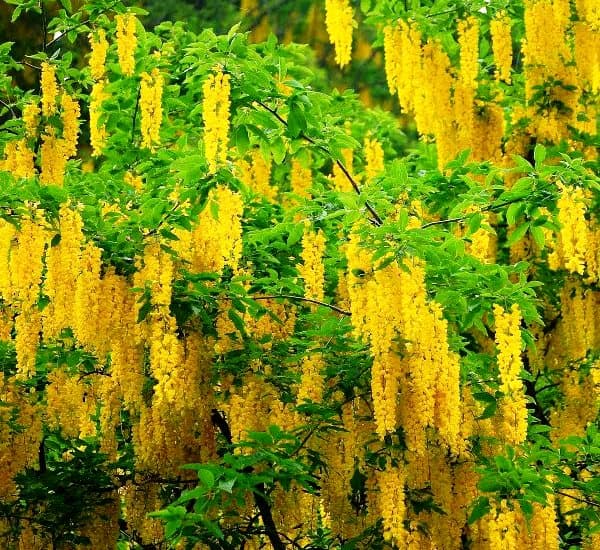
Interesting varieties:
"Pendula" is a tree on a trunk with decorative long sparse shoots that hang down almost to the ground.
Sunspire is a dwarf group that you don't often see on sale.
Vaterera bean (Laburnum x watereri) is an interspecific hybrid. It has the shape of a low, multi-stemmed tree with drooping upper shoots. The tree reaches its maximum size only after 20-50 years.
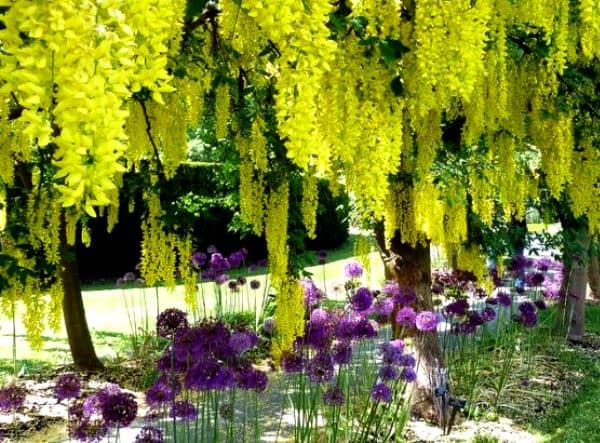
Fragrant flowers are collected in very dense and long inflorescences 40 cm in length. Vossii is characterized by the most impressive and numerous 50 cm long inflorescences. This species is sensitive to severe frosts and therefore needs shelter.
In nurseries, you can also find pink bean or Laburnocytisus adamii, which is an intergeneric hybrid with broom.

Both yellow and pink inflorescences bloom on the tree at the same time, which can acquire a red and purple hue.
Pest control
When pests are found, the fight against them is reduced to washing the leaves with soapy water.The appearance of dry spots on the leaves of the haulteria indicates sunburn or improper watering. And yellowing of their tips is about insufficient air humidity or high temperature in the room. If you choose plants of a suitable variety and provide the bush with comfortable conditions, the garden will delight with flowering, and in winter - with wonderful and fragrant fruits.
Holteria is resistant to diseases and pests. When planted in a suitable area and provided with proper care, the bushes will actively grow without problems. The "killers" of the plant are alkaline soil and waterlogging.
Growing features
Now let's figure out how to properly plant this shrub.
Choice of location, lighting and soil
The plant does not tolerate dense shade. If the soil is moist enough, it is better to opt for illuminated, but at the same time closed from the wind, places. The most suitable for this would be an area with partial shade, for example, near deciduous and coniferous trees or shrubs, which, in addition, will protect the bush from strong winds.
It is grown, as a rule, on peaty acidic soils with a pH of no more than 5, well-drained and loose. If you work on heavy soil (clay, loamy, etc.), remove the top layer by 25-30 cm, lay out drainage from gravel and sand below, pour peat on top (three parts), half-rotted coniferous litter (two), sand (one ).
Planting process
The haulteria is planted in early spring. In dense soils, seedlings are installed at a distance of 22-26 cm from each other, in loose soils - at 38-40. The root collar should be flush with the ground or slightly lower (about 1.5 cm). The depth of the fossa is 30-40 cm.Drainage - with a layer of 12-16 cm.
Water it abundantly, but infrequently (twice a month 6 liters of water for the bush is enough). When it's dry and hot outside, they water it more often, and they also spray the leaves.  All this should be done in the evenings, after sunset. Use soft, preferably rainwater for watering.
All this should be done in the evenings, after sunset. Use soft, preferably rainwater for watering.
Next, we will learn how to care for a plant so that it grows and bears fruit.
Top dressing, mulching
In the spring, the shrub is fed with fertilizers. One of the most optimal options is “Kemira Universal” (funds are taken from 100 g per m² of land). Another option is nitroammofoska (when digging up the earth, 40 g of granules per 1 m² are taken and evenly distributed over the surface).
Alternatively, you can take any other fertilizer with a high nitrogen content. In the middle of summer, it is recommended to switch to nitrogen-free fertilizers.
In autumn, young plants are covered with a dry leaf, adults are mulched with peat or chips (layer - 9-10 cm). 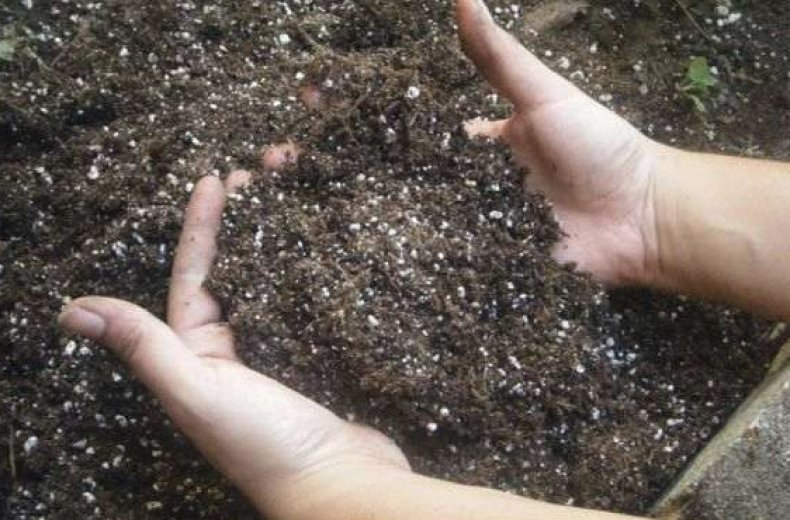
Cleaning and trimming
When loosening the ground, it is necessary to remove weeds that harm the development of the shrub.
Weeding should be done only by hand, and the soil should also be loosened carefully so as not to damage the roots, since they are located close to the surface.
Before the start of spring growth, the shoots must be cut off a little so that the plant can fully develop. And dry branches should be disposed of as needed, completely cutting them off.
In severe winters without shelter, the gault may freeze or even freeze completely.
But under the snow, she is able to winter perfectly (even at 35 ° C below zero). Therefore, in winter, snow is thrown over the bush.
If the winter is not snowy, it will certainly be covered with spruce branches. Young plantings are covered with dry leaves or peat. 
The gaulteria is endowed with remarkable resistance to disease and pests. The main thing is to plant it in acidic soil and prevent waterlogging. Then serious difficulties will not arise.
Otherwise, it will very quickly die from rot or soil pH mismatch. This is her main weakness.
Pests and diseases
Basically, the culture is resistant to diseases and problems arise with improper care of the haulteria.
With high humidity and poor air circulation, plantings can be affected by fungal diseases such as black mold, leaf spot and powdery mildew. As a treatment, the bushes are treated with antifungal drugs.
Low acidity of the substrate leads to the development of chlorosis, which is manifested by yellowing of the foliage.
The so-called "galls" on the leaf surface can be caused by mites, fungi or bacteria. The affected parts must be burned, to avoid contamination, avoid damaging the plants.
Propagation of gaulteria by seeds
Seeds require a period of cold stratification to germinate. Before sowing, they are kept for 4-10 weeks in moist peat in a refrigerator at a temperature of 1-3 ° C, and then a mixture of peat and sand is sown at the beginning of March.
Germination usually takes 1-2 months under the condition of constant soil moisture and a temperature of 20 ° C. Seedlings 25 mm high are dived and planted in separate pots.
Planted in open ground in early summer. When propagating by seeds, it should be borne in mind that seedlings do not inherit the varietal characteristics of the parent plant.
Propagation by cuttings and layering
An easier way to reproduce is vegetative.
Lying haulteria is very easy to propagate by root cuttings. They dig into the ground, find a rhizome and cut off a part of it with roots and a ground shoot. The seedlings are immediately transplanted to a new location.
Semi-lignified apical cuttings 7-10 cm long are cut in August-September. The lower leaves are cut off. It is advisable to lower the slices into a special powder-stimulator of root formation, and then plant them in a prepared mixture based on peat and sand. After planting, the soil is watered and placed in a shady place.
With the beginning of growth, the pot is transferred to partial shade. A month later, they are transplanted into a fertile substrate by the transfer method. In winter, they are kept in a cool room, it is possible on an insulated balcony. They are planted in open ground at the end of spring.
Reproduction by layering gives excellent results. In the spring, the side shoots are tilted and a small groove is laid. Sprinkle with a fertile substrate, leaving the apical part above the ground. Keep the soil moderately moist until the next season.
In the spring, a young plant that shows signs of growth is separated and replanted.
Application in garden design
The ground cover species is planted in places that require soil strengthening, since a dense carpet helps protect the soil from washing out.
Gaulteria will be a great addition to rockeries and alpine slides. Looks beautiful in a composition with any representatives of conifers, ferns, rhododendron, Forchun's variegated euonymus, boxwood or Thunberg barberry.
Ideal for potted terraces and balconies. In winter, twigs with berries are used as Christmas and New Year decorations. To create bright autumn compositions, short bushes of chrysanthemums, heather or erika are planted next to the gault.
Latin name: Gaultheria
| The soil | |
|---|---|
| The size | |
| Flowering time | |
| Possible colors | |
| Illumination | |
| Watering | |
| Difficulty leaving | |
| Air humidity | |
| Fertilization frequency |
Seed propagation of deren
Seeds of hybrid and varietal forms are often sterile, but viable material is commercially available. Seeds require a long period of stratification to germinate. Sown outdoors in October, they germinate in spring in March or April. Although some seeds can only germinate after a year.
Young shoots are weak and need protection from sun and wind for several months. Therefore, the seed is best sown in containers, where they can be germinated indoors. The stratification period takes approximately 4 months.
The seeds are placed in a bag in wet sand and stored in a refrigerator at a temperature of 2-3 ° C. After a period of stratification, they are sown in a wet mixture of sand and peat, germinated at a temperature of 18-20 С.
With the appearance of 3-4 leaves, the seedlings dive and are planted in separate pots in fertile soil. Planting deren in open ground is carried out after 2 years of cultivation in a pot.
Problems in growing turf
1. The most common fungal disease of ornamental turf is anthracnose. The disease begins with the appearance of brown spots on the leaves with purple edges, which subsequently turn brown, and the leaves curl and dry out.
Secondary signs of the disease are necrotic brown areas on the bark of branches and trunk. Treatment is effective if the disease is detected before the branches begin to die off.

Symptoms of anthracnose in white variegated turf
2. In thickened plantings with high humidity and poor air circulation, plantings can be affected by powdery mildew, most often at the end of summer.
Its symptom is a white-gray powdery coating on the leaves, which eventually discolor and curl. Warm, dry days and cool, humid nights contribute to the development of the disease.

Powdery mildew
3. The leaf spot is caused by the fungi Cercospora cornicola and Septoria. The disease is most common during the humid summer months and can affect all foliage that falls off prematurely. Usually, the disease does not greatly affect the growth and overall health of the bush, but repeated years of early abscission can weaken the plant.

Leaf spot
The control of all fungal diseases consists in proper care of the lawn, timely removal and burning of affected plant parts, improvement of air circulation, and the treatment of plantations is carried out with the help of repeated treatments with fungicides.
4. Darkening of the tips and edges of the leaves, wilting, curling, the appearance of a pinkish tint on the back of the leaf blade are the result of stress caused by drought, heat stress or prolonged flooding of the soil. Symptoms like these can also be a sign of over-feeding.
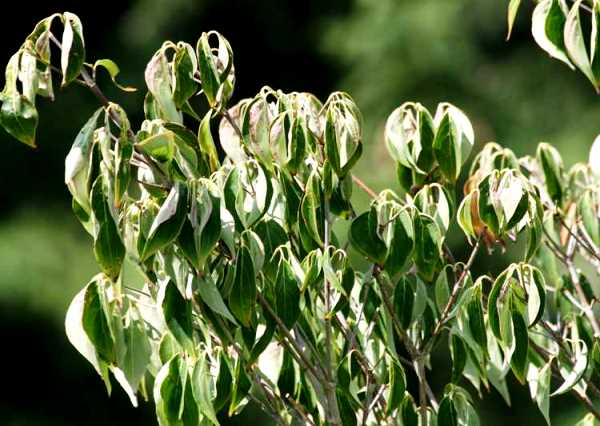
Leaf withering due to heat and water stress
5. Leaves burn. It looks like a disease, but the reason lies in too dry environmental conditions, which cause severe stress on trees and shrubs of turf.

Foliage burn
Leaves at the edges dry out, turn yellow. Due to their shallow root system, young seedlings susceptible to drought are most susceptible to burns.
Decorative sod in landscape design
Each garden composition passes a difficult exam in late autumn, when the snow has not yet fallen, and the plants have withered and the leaves have fallen off. It was during this period that we can appreciate all the beauty of a deer tree with decorative shoots, which become a bright accent of the garden, creating a festive atmosphere until spring.
The shrub looks most advantageous in a group composition with varieties of different stem colors: red, chocolate and yellow. Few plantings of 1-3 bushes are effective against the background of conifers and cereals.

A good place to grow turf in the garden is in areas near artificial reservoirs. Compositions with other ornamental-leaved shrubs and low-growing weeping trees provide an interesting color effect throughout the season.
Canadian turf is ideal for creating rugs under tree crowns and in shady corners of the garden.
The culture fits perfectly into a rural or English landscape style, it is an ideal backdrop for evergreen vines, primroses, early flowering bushes and trees: azaleas, forsythia, sakura and others.
Derain is often used in hedging and as a tapeworm against a green lawn. The decorativeness of a single planting is especially effective in the Coase deren in the spring garden landscape.
Spreading
Haulteria grows in its natural environment in the temperate climatic zone of middle latitudes. So, various species are found in the southern and northern regions of America, Africa, Australia and eastern Asia. Cultivated plants are found in many other areas, including Russia and abroad.
The haulteria prefers to grow in areas with a lot of warmth and sunshine. Some varieties grow in the Southern regions, so the first plants belonged to a different family. But after studying the characteristics of the plant, all varieties of haulteria began to be attributed to a single genus and family.

Description
The genus includes about 100 species; the North American recumbent (Gaultheria procumbens) is considered the most resistant for domestic gardens. This low, about 15–20 cm tall, evergreen shrub easily covers large areas thanks to its long, creeping rhizomes. Young shoots are bright, coral-red.
The leathery, shiny leaves also shimmer with crimson. Discreet, delicate drooping creamy bell flowers appear unevenly during July-August. On adult bushes, they are collected in small brushes. With the approach of autumn, large bright red berries appear among the foliage, which makes the bush look a bit like a cranberry. They are inedible, birds do not peck them, and the fruits stay on the plant all winter.
Gaulteria (lat.Gaulthеria) are compact shrubs 20-25 cm high from the Heather family.

Big berry gaulteria big berry photo The time of flowering comes in June. Lovely snow-white flowers, shaped like lilies of the valley, hang in several pieces. Round berries appear in the fall and can last until spring, without fear of the winter cold. Many do not know if the berries are edible or poisonous. Be aware: the fruits are not poisonous, but when consumed in large quantities can cause stomach upset, even birds peck them a little, so that the beauty of the bush is not disturbed.
According to various sources, the genus Gauleria (Gauleria, Golteria, Gothieria) has 170-180 species. The name was given in honor of the French botanist, doctor, zoologist, meteorologist Jean-Francois Gaultier, he was also one of the first to study the flora of Canada. In nature, thickets of haulteria are common in the highlands of Australia, Asia, and the Americas. A cold-resistant plant in central Russia can be grown outdoors.

Flowering begins in June - July. Small fragrant white with a pink tinge of bell flowers appear, which insects pollinate with great pleasure. In autumn, by the beginning of October, large beautiful red berries, similar to cranberries, ripen. They can stay on branches until spring, because they are not edible for birds, and they do not peck berries.
According to the generally accepted botanical classification, recumbent haulteria refers to:
- the heather family;
- order of heathers;
- dicotyledonous class;
- department of the flowering kingdom of plants.
Under natural conditions, this ornamental shrub inhabits North American forests. It is also readily cultivated in other parts of the world. Plant height is relatively low (maximum 15 cm). It is characterized by the preservation of its green color all year round.
The leaves of the gault are in the shape of an ellipse or an oval. The length of the leaf can be from 2 to 5 cm, and the width is only 1-2 cm. The leaves of this plant have a unique smell. White flowers resemble bells in shape, they reach 0.5 cm in length.The diameter of rich red fruit berries varies from 0.6 to 0.9 cm.
The haulteria tolerates severe cold quite well. Therefore, it can be safely bred in the open field in our country. An alternative name for the culture is the American wintergreen; in North America itself, it is called the oriental tea berry.
The corolla of these flowers has 5 petals. Gaulteria is a good honey plant. Bloom spans July, August and September. After that, rather small scarlet berries are formed.
We invite you to familiarize yourself with Fishing for roach in winter in open water
It is noted that birds, rodents and omnivores of the North American forest readily use these fruits (even bears eat them). At the same time, publications from the USA and Canada claim that berries can be eaten, but their taste is evaluated in different ways everywhere.
Gault breeding
Reproduction of the haulteria is possible by generative and vegetative ways. The seed method is used little, since it is rather complicated and, moreover, does not preserve the varietal characteristics of the plants.
The easiest and most accessible method for beginners is considered to be layering. To do this, the branch in the spring is bent to the ground, sprinkled and fixed in this position. Further, throughout the year, the layering is watered. Thus, by the fall, the roots will appear and the young plant can be separated from the parent.
You can also resort to grafting. Cuttings are cut in summer or autumn. The tops of semi-lignified cuttings are used as material. They are treated with an agent that enhances root formation and rooted in the river sand of a coarse fraction.
Additionally, you can cover the cuttings with foil, but this is not necessary. Also, you should not place the material in bright sun. Cuttings are grown until spring in a pot, and in spring, if desired, are planted in open ground.

